How Shepard Smith anchored separate newscasts back to back
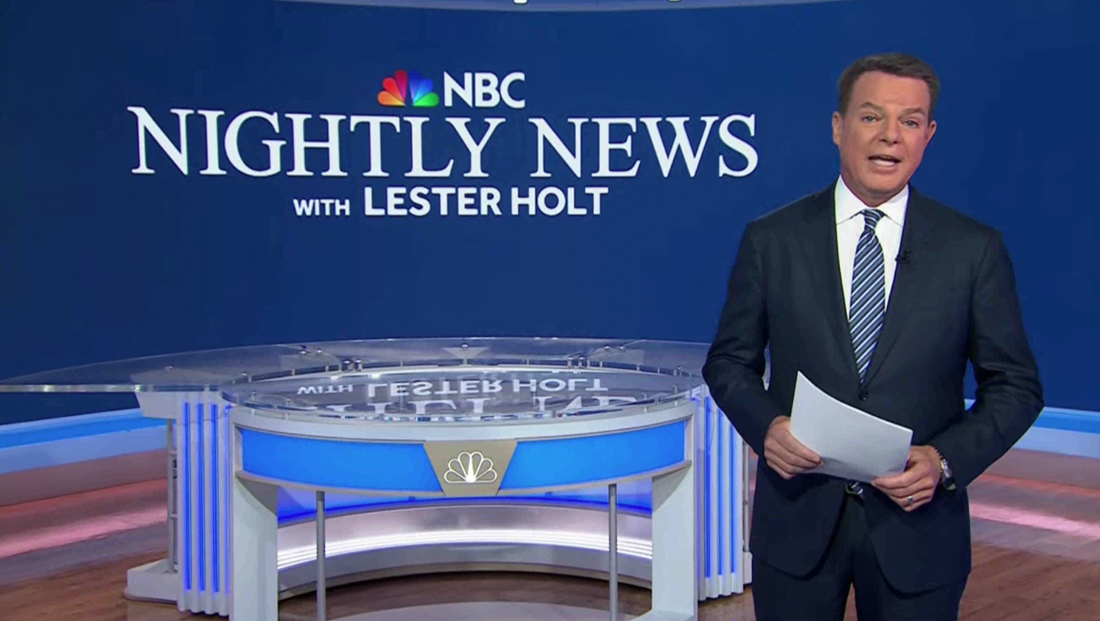
Subscribe to NCS for the latest news, project case studies and product announcements in broadcast technology, creative design and engineering delivered to your inbox.
On Friday, March 18, 2022, former Fox anchor Shepard Smith substituted for Lester Holt on “NBC Nightly News.”
When he signed off from “Nightly,” he was almost immediately back on air on his own “The News” broadcast on sister network CNBC.
“Nightly” airs from 6:30 to 7 p.m. eastern time Monday through Friday while “The News” starts at 7 p.m. and runs to 8 p.m.
Smith anchored “Nightly” from Studio 1A in Rockefeller Plaza, the broadcast’s normal home. Since there obviously wasn’t time for him to travel to Englewood Cliffs, New Jersey, where CNBC’s headquarters and “The News” studio is, Smith simply stayed put at 30 Rock.
The change in venue for “The News” likely wasn’t super obvious to most viewers — the show was able to carry over similar video wall backgrounds behind Smith thanks to the plentiful arrays installed in 1A.
There were times, however, that the red chair Holt usually uses during “Nightly” was visible behind Smith’s back. Smith also notably moved his laptop from the camera left of the desk to camera right.
“Nightly” typically has the anchor’s on-set laptop camera left to avoid its open screen from covering the video wall graphics behind the desk, which need clearance on the right side of the screen.
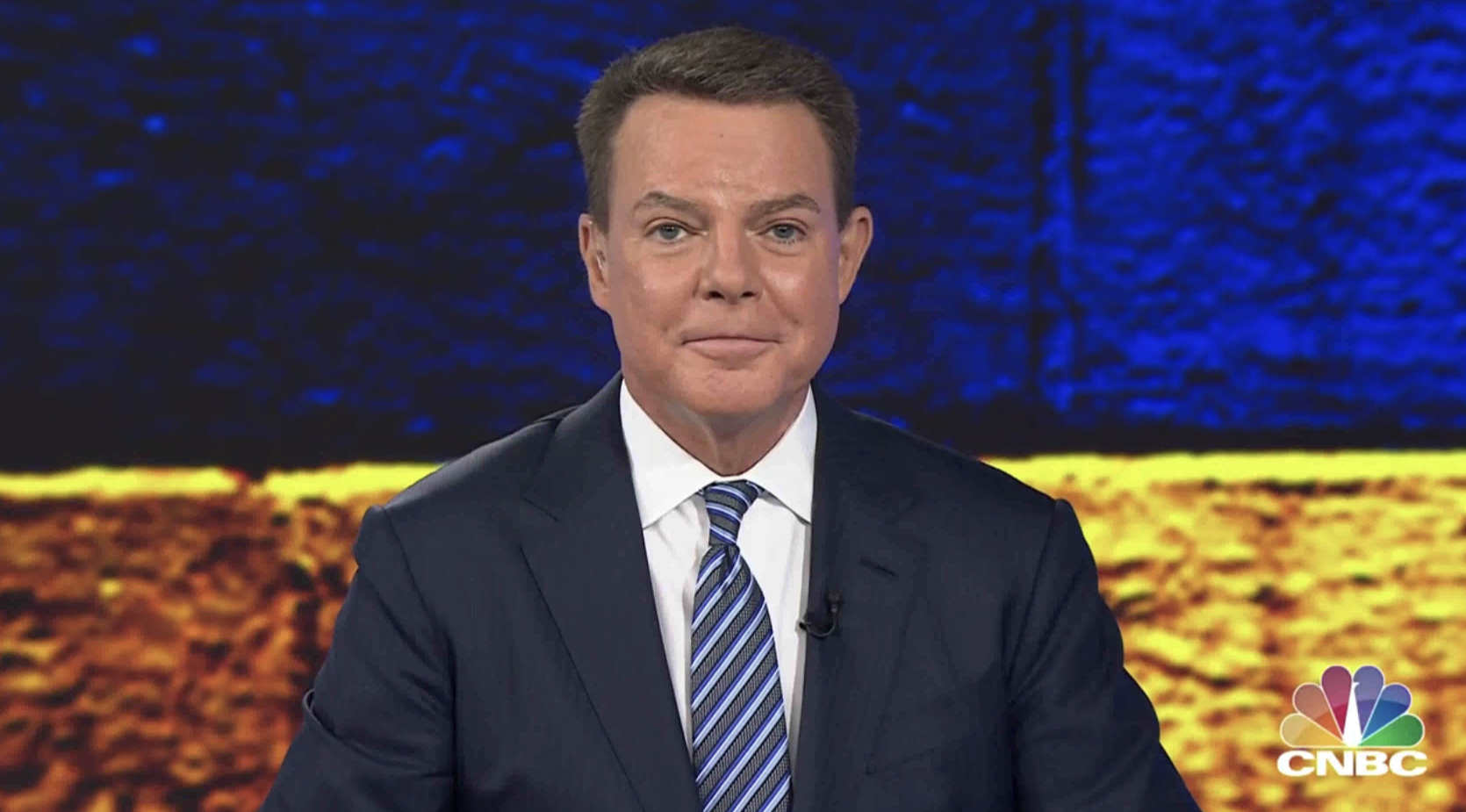

This shot, taken from March 18, 2022’s ‘The News with Shepard Smith’ shows Smith in Studio 1A at Rockefeller Center with the Ukrainian flag themed background behind him on a single LED video wall.
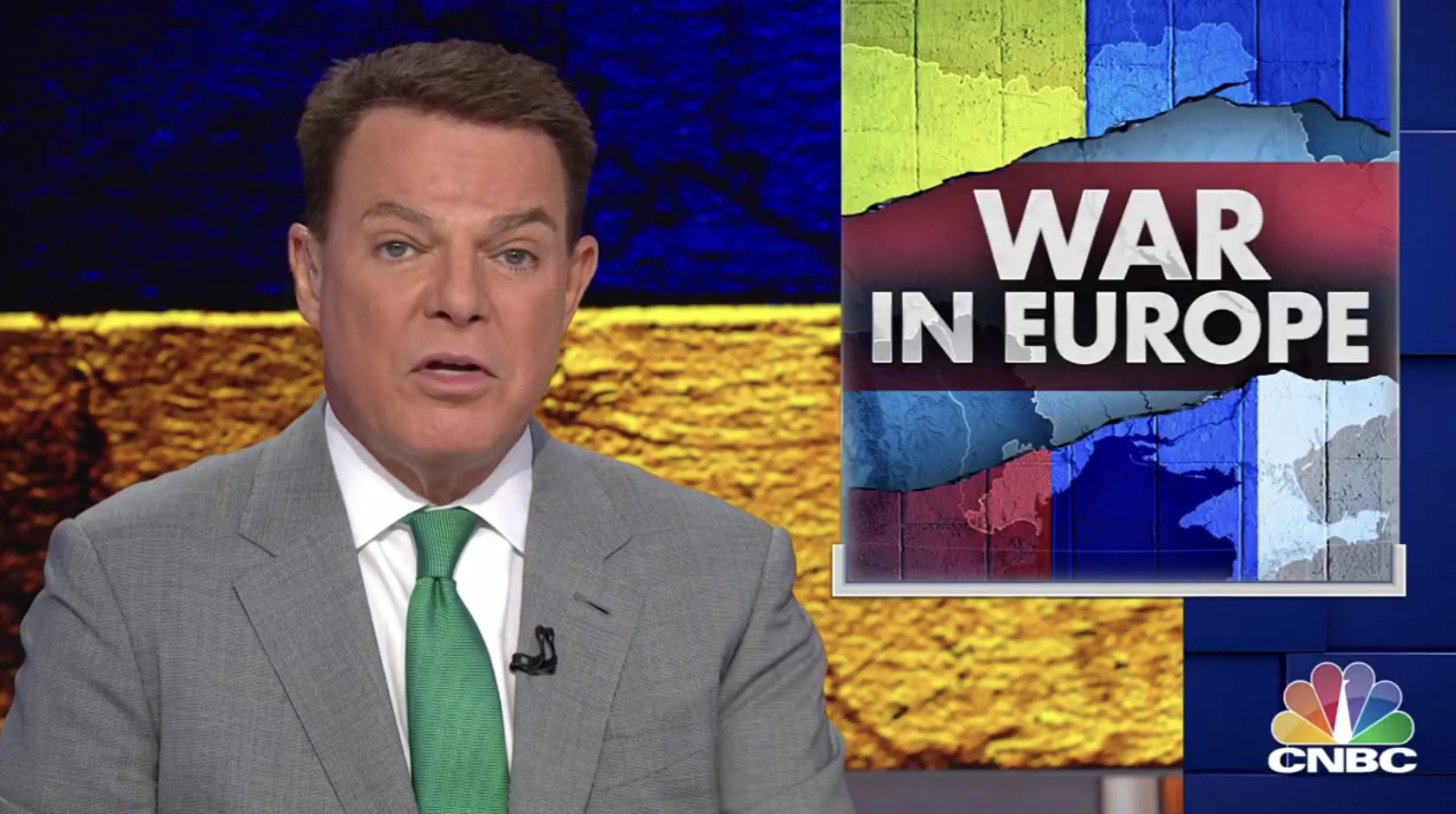

On March 17, 2022, ‘The News with Shepard Smith’ originated from its normal home, Studio B at CNBC headquarters in New Jersey with the same graphics behind him. However, note how the yellow line hits higher up behind Smith and along the bottom of the screen to the right of the image the edge of the LED video wall is visible and some of the hard scenic elements behind it are visible.
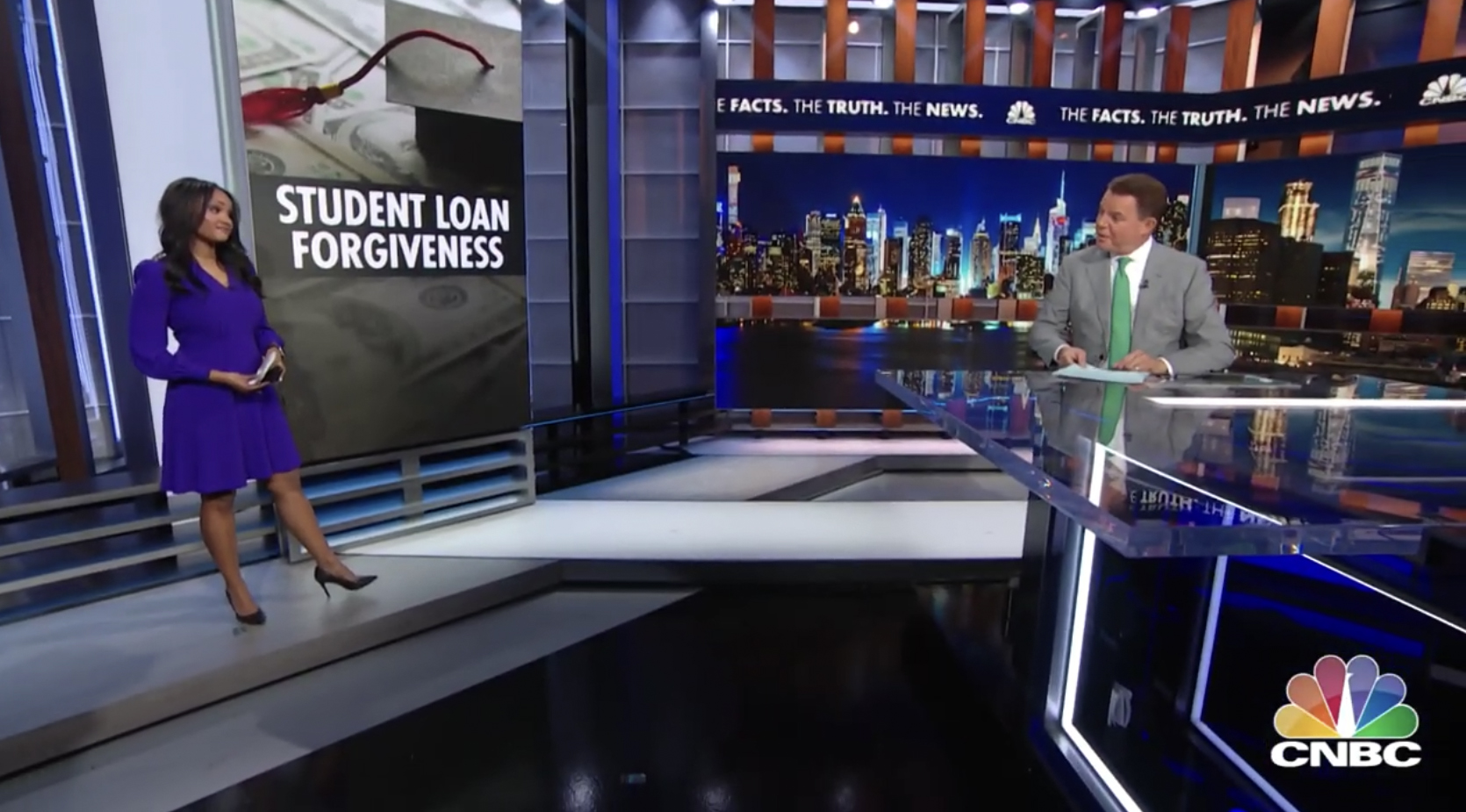

Shown here is a wider view of the entire video wall array behind Shepard Smith’s anchor desk in New Jersey. Note how the ‘ticker’ runs across the top, followed by a taller segment and then an additional one near the floor, all of which allow the columns and gray wall to show through in the narrow openings between them.
One noticeable difference, however, was that the video wall background Smith was in front of in NYC was a single surface, whereas at CNBC it’s three strategically placed bands of LED.
Another reason viewers might not have noticed Smith was in a different place is that “The News” still incorporated shots from Studio B in New Jersey over Smith’s voiceovers from New York.
The was done during the “video on video” and “walk and wander” floating camera shots “The News” uses frequently, including a segment that showcases a stunning NASA photograph and key facts about the NCAA St. Peter’s Peacock upset.


Essentially, March 18’s “The News” was produced from two separate studios — 1A in New York and B in New Jersey.
This isn’t an uncommon practice — fellow sister network MSNBC has done it when “MSNBC Reports” in anchored from the field, cutting back to floating camera video wall shots in Studio 3A. Shots from ABC’s Studio TV3 have shown up on “Good Morning America,” which is produced out of Times Square.
This type of arrangement can be accomplished in multiple ways — either with a camera operator on hand in the other studio who frames up the shots and makes moves live as the anchor, located elsewhere, reads the script.
This approach is typically a better option if the camera moves need to be closely tied to what the anchor is reading, such as Smith’s VO during the NCAA story.
It’s also possible for these segments to be pre-produced to tape and then simply played back as if they were any other video clip being incorporated into the broadcast.
Both “ABC World News Tonight” and “Nightly,” which make heavy use of the video on video technique, often pre-record select shots before coming on air.
Because Smith wasn’t in Studio B back in N.J., the show wasn’t able to do any debrief style shots with correspondents like it normally does and didn’t opt to try to recreate them in 1A.
“Nightly” closed out its broadcast shortly before 7 p.m. eastern as usual and moments later Smith popped up on CNBC, though it’s worth noting that many news broadcasts pre-tape their tease headlines, so it’s possible that the open of “The News” was taped, buying Smith some extra turnaround time.
It’s also not uncommon for “Nightly” to pre-tape select segments, so it’s possible March 18’s closing was taped in advance as well.
The one issue that NBC could have run into is the “western edition” second feed that is produced after the first version wraps at 7 p.m. eastern. This version is mostly done for affiliates in the western U.S. to tape and air at the time “Nightly” airs in that market, often 6:30 p.m. local time.
Many times the second feed is simply a “live to tape” replay of the first feed, though the network may opt to correct any slipups or technical glitches by editing what’s sent out, or having the crew and anchor redo a portion, discarding the original version.
Other occasions may require the western edition to be updated with new, revised or corrected information that came in after the first feed aired. In rare cases, stations in the west get a completely or mostly live version of the newscast when breaking news means the original version isn’t expected to age well over the few hours between broadcasts.
In at least once case, the broadcast planned ahead and offered a unique countdown for stations in other time zones.
Typically the second version is the one shown in the early morning hours on NBC owned stations.
Subscribe to NCS for the latest news, project case studies and product announcements in broadcast technology, creative design and engineering delivered to your inbox.


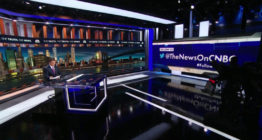



tags
NBC, NBC News, NBC Nightly News, Studio 1A Rockefeller Center, studio b, The News with Shepard Smith
categories
Broadcast Industry News, Featured